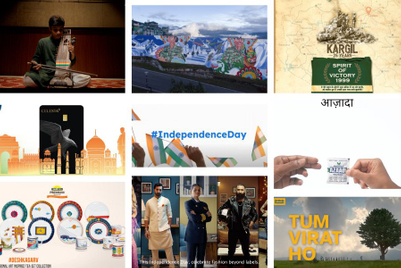
Beverage brands are turning to healthier options, such as ready-to-drink (RTD) tea, as rising health consciousness slows demand for carbonated drinks and fast food.
Asia’s RTD tea consumption last year was 22.9 billion litres, a US$34.7 billion retail juggernaut, according to Euromonitor International. The region is the world’s fastest-growing soft drink segment. With the compound annual growth rate of global off-trade volume at 8.2 per cent, from 2002 to 2012, RTD teas outperformed carbonated drinks (1.7 per cent CAGR), juices (4 per cent) and bottled water (7.2 per cent).
Asia’s deep-rooted tea-drinking culture, economic growth, urbanisation and higher disposable income make it an ideal market for companies to launch new RTD tea brands.
Nevertheless, not all categories are well-received. Demand for full-flavoured teas such as Lipton Iced Tea and Nestea declined in recent years, Euromonitor International notes, with the trend continuing in 2013. This suggets consumer health consciousness has risen and they demand lower sugar content.
Some RTD tea products provide calorie readings and highlight benefits on the product packaging, such as antioxidants and Vitamin C to target the health conscious.
Brands have also diversified to cater to different taste demands, with some products focusing on authenticity for consumers seeking “naturalness”. Coca-Cola markets its Ayataka as a RTD tea made from “all natural ingredients” and its flavour comes “closest to authentic Japanese teapot-brewed tea”.
Trendwatching.com head of Asia Pacific Tara Hirebet says brands need to help time-pressed Asia consumers with “being and feeling healthy” on the go and should make drinks portable, convenient and effortless.
“Most Asian countries have their own local ingredients. Local and regional brands are already innovating in this space for local markets.”
For example, Indian dairy cooperative Amul has bottled traditional drinks such as Masti, a South Indian speciality made from buttermilk and spices. “International brands need to catch up and take a page from them or partner with them,” says Hirebet.
Many young Asian consumers value herbal ingredients and their benefits (such as chrysanthemum, longan and red date tea, as well as iced milk tea), so bottled herbal drinks are also on brand launch pads.
Habu, the first herbal drink Coca-Cola launched in Thailand, uses four cooling herbs for a product to target consumers in tropical countries such as Thailand, Malaysia and Singapore.
Euromonitor Singapore’s head of country research, Kelvin Chan, says in his report that the arrival of RTD products made consuming tea-based drinks more convenient. People have also gained exposure to Western flavours such as Iced Lemon Tea, using black tea as the base.
New RTD tea flavours include White Tea with Acai Berries, Honey Green Tea and Peach White Tea.
Marketing strategies typically involve above-the-line communications in print and on TV, together with sampling and road shows.
While product appeal and pricing are important, manufacturers also play a significant role due to their knowledge of local consumers and distribution networks.
Zero Degree green tea, for example, tapped into the distribution network of its parent Tan Hiep Phat during its 2006 launch in Vietnam. The beverage is served in consumer-friendly outlets such as tuck shops and canteens in schools and universities to increase exposure to young consumers with little adspend before expanding its marketing and distribution across all channels. The product comes in plastic bottles which helps draw a distinctive contrast with its sugary, carbonated and canned competitors.
EXPERT OPINION Make healthy options easy and quick
 Tara Hirebet, head of Asia Pacific, Trendwatching.com
Tara Hirebet, head of Asia Pacific, Trendwatching.com
Consumers in Asia are going through a period of changing priorities. One of the biggest changes is an increased focus on personal health — the belief that health is wealth and the ‘priority spend’ for Asian consumers today.
But not buying ready-to-consume products is not really an option. Time-pressed young working adults especially need and want convenience in the form of fast ‘hawker’ food or prepackaged foods and beverages. However, they are health-conscious and want to look young and look good for longer.
They will demand and snap up brands that offer them convenience with the added health benefits of natural, herbal and healthy ingredients and processes.
If you can make the product sustainable from production to packaging too, even better.
Modern options such as sparkling and carbonated drinks, made with spring water, low fat, low-sugar, organic, natural sugar and no-sugar varieties are also proving increasingly popular.
Globally, organic and healthy beverages now offer sugar substitutes such as honey, agave and maple syrup. Brands in Asia should consider using local natural options such as jaggery (unrefined cane sugar often used in India), palm sugar, coconut palm sugar and black sugar, in addition to no-sugar options.
Functional healthy drinks centred around urban lifestyle pain-points such as energy, rejuvenation, fitness, stress, relaxation, and sleep, combined with local ingredients in a modern tasty format and well-designed packaging will appeal to young Asians.


.jpg&h=334&w=500&q=100&v=20250320&c=1)


.png&h=334&w=500&q=100&v=20250320&c=1)





.png&h=334&w=500&q=100&v=20250320&c=1)
.jpg&h=268&w=401&q=100&v=20250320&c=1)
.png&h=268&w=401&q=100&v=20250320&c=1)





